Starseeds is a mix of quantum physics, cosmic mythology, Joseph Campbell heroics, biblical fight comics, metaphorical political commentary, and the special sauce of Tijuana-based painter-turned-cartoonist Charles Glaubitz. Fantagaphics published its first two volumes in 2017 and 2019; the third arrives this week.
I can give Starseeds the ultimate compliment for a comic: there aren’t any others like it, although it contains plenty of familiar elements, from Druilletian grandeur to old-fashioned fistfights. Jack Kirby is important to Starseeds. There are plenty of Kirbyesque comics, but not like this. While endless cartoonists have learned from or imitated Kirby, Galubitz doesn’t treat Kirby as a model, but more of a key to the cosmos - part of a cosmic alphabet. It’s a battle between good and evil and a story of transformation; more importantly, it’s a story told via some of the most spectacular art in comics, with ever-varying page layouts and a sense of propulsive motion that is invigorating and fresh.
I spoke with Glaubitz via video recently. This is a lightly edited transcript.
-Mark Peters

MARK PETERS: Well, I just the love the book, man. It’s just wonderful. It's kind of a hard work to sum up - it feels like it encompasses all of reality. Can you give a short overview of Starseeds for the uninitiated?
CHARLES GLAUBITZ: Okay. Well, I thought I was doing the beginning of a new universe. A creation myth. But now I've realized that I'm talking about the end of a universe, heading towards a creation, a new creation myth. Does that make sense?
Basically what we're seeing in the three Starseeds books is the end of a world, the end of a way of seeing things in a battle between these concepts for change going up against I guess what would be a symbol or a metaphor for the concepts of everything that we've imagined horrifically that humanity has created: fascism, oppression, control, war. Etc. Etc. So I think-- it's hard for me to even put it into words, but I think it's a hero's journey. I think that would be the most simple answer. A hero’s journey that explains the scientific and philosophical structure of that universe. [Laughs] Does that make sense?
Yes.
By the way, I love that each volume can kind of be read on its own as a whole, but they echo and build on each other too. How would you characterize this new volume as compared to the other two? To me, it almost feels like a biblical action comic, but how would you describe the new one?
I like that. Biblical action comic. It’s definitely inspired by the language of William Blake and Kirby's later works that sound very, I don't know, mythical to me... written in a time where ideas were still not solid. So I think that the idea of the story going from one book to another book to the third book is that it should be flexible because time is flexible. And you should be able to read each book and enjoy it. But at the same time, when you read all three books, the ideas that are put out there are solved continually in each book, so each idea expands from the first one to the second to the third. And I think when you read the third, it expands on the idea of the previous book.... When you read the third book, you're like, oh, that [first] book, which was so metaphorical, ambiguous, or non-defined, right? Makes total sense - makes more sense now than it did when I read it.
And I think that it keeps going back to this idea that Joseph Campbell reiterates in his talks: about how for a myth to be alive, to experience it, it has to be transparent. So it's like it's open. It's open to time. It's open to be reinterpreted. It's open to be, you know, to be reread and be seen differently from the first time you've read it. And I think that's why I chose more of this poetic, metaphorical language, utilizing concepts, trying to-- I guess trying to make something that's poetic using scientific concepts. So if you understand the concepts that are in the language, then it becomes very poetic. It becomes very metaphorical. And I think one of the things is, it's definitely a book for somebody who's initiated. For those who are not, I'm sorry. I realize that I should have done something that was like taking somebody by their hand and introducing this world to them. But I think at the end I can only make work that's in my own language. So I hope maybe sooner or later there will be a reader.
I'm an atheist, but I get such a strong religious feeling from Starseeds, probably because of the mythical Joseph Campbell element and the quantum aspect of it. But more than ever in this one. Was there something that made you lean more into the biblical elements by framing the chapters with your own psalms?
Well, religion is the organized idea. Religion is an organization of like-minded people that wraps around a myth. So when I looked at this, I didn't see it as religious. You know, I'm thinking about a people's ideas on mythology and how they've converted that into a system... I don’t know what religion does, really. [Religions] look back at history to control people, to give them a reason to live, I guess. And I just thought that the psalms were a fun way to play with the idea of a new religion or a new understanding of the cosmic or the cosmos - if the cosmos were made sacred, but not so much in a religious way. Now that you say that, I kind of think maybe by making them sound like that, people would get a religious feeling, but it was not so much to try to make it biblical... that kind of language tends to be related more to how these mythologies, such as the Judeo-Christian mythology, become a religion or become a system in our world. How from a magical, fictitious story, it becomes a power that transforms our reality. And I think that's more what I was trying to say: what if we used the same kind of system to communicate the idea that these four cosmic forces are sacred, and what do we use? The same kind of language religions have used to become real in this world. But it’s not supposed to be religious.
Right. Religion may be the wrong word on my part.
Yeah. Okay. But I understand the connection that you make, because I definitely did say it's like-- okay, who, what mythology controls the world, right? The biggest mythology that controls the world and the spiritual ideas: the Judeo-Christian-Muslim idea. So it's like they use this language. Blake uses this language. Jack Kirby, once in a while. So it's like, okay, I'm going to riff on that.
I'm going to jump ahead here a little bit since you mentioned Kirby, who, you know, I'm also a giant fan of. I know you originally weren't a Kirby fan and came to appreciate him more over time. I feel like the Kirby element has been increasing in each volume. I don't know if that's just me, and I don't mean that you're aping Kirby. I guess it feels like Kirby is some primordial force that's powering your work, and tapping into it more is part of the natural process of telling your story. You know, in particular, one thing I noticed, besides the mythology and the God stuff, I think I noticed more stuff that looked like Kirby Tech to me in this volume. I don't know if that's what you were going for, but am I on to anything there or no?
I think you definitely are. The language part of the stories has gotten more iconoclastic, bombastic, which is, you know - I keep going back to Blake and Kirby’s later work. And I think, story-wise or language-wise, it's a little bit stronger than [in volumes] two and one. And I think going back to the idea of Kirby Tech, and going back to the idea of I how wasn't a big fan of Kirby at the beginning... when I got into Kirby, I became a big fan through his writing. It spoke to me. I remember I read New Gods and the way it was written spoke to me. I completely understood it - I ate it up. I like this form of telling a story in a mythical comic book language. And it wasn't like real dialogue, but it was, like, these are new gods, right? They speaketh this way. So to me, first "Kirby" was through the way it was written. And then I studied the art.
And then I figured out how just magnificent his art was, how he could make my eye move through the page, how he could manipulate the reader's eye to action and direction and high drama. And his Kirby Tech has always amazed me. Every time I see Kirby Tech, I am in awe of what it is and what it could mean, because it's abstract art. I look at it as abstract art. And anytime I have an opportunity to talk about anything that's biological or technological or biotech, I think of Kirby Tech. I think about that way of communicating the idea of circuits and things connected and things pulsating and moving. It's organic, but at the same time it's technological. I'm in awe of it. I think it should be seen as high art.
Absolutely. Some of the Kirby Tech in this one, or Kirbyesque tech, whatever the term may be, reminded me of his '80s work, like Captain Victory and Silver Star. Especially Captain Victory. Are you a fan of those works?
I have the whole Captain Victory series, and I've never read it. I bought it off eBay... I have the whole series. But I haven't sat down and read it. I've read Silver Star, and I have the Image Comics hardcover. It's not one of Kirby's greatest works, but it has some really good parts in it and some really great ideas.
Drawing the Kirby Tech does something to my mind that is so enjoyable because it's just based on pure shape and form. So there's no content to be other than what it is. So it's like when you do a drawing, you're trying to express either motion, emotion, action or something. That's the content part of the drawing you have to convey. The Kirby Tech is just pure design delight. And I think my brain kind of gets trained to become a better designer or artist because now you're playing with these elements and principles of design where you're looking for rhythm and you get rhythm with scale and size and motion and line and shape and form. I can just get lost making that stuff up.
It's so beautiful. I think I may have texted you or something that I was out with my girlfriend and we were both doing work of various sorts, and I was looking at Starseeds and inadvertently made a fan out of the waitress. She was very, very impressed with just the kineticism and the power of the artwork.
And I wanted to go back to something you said a little earlier about the motion, because that that's one of the biggest things that strikes me as I read this. I feel like almost every page, there’s just motion, pulsation, and transformation. It's a totally different sort of work, but I was just reading Garden by Yuichi Yokoyama, and there's such constant motion there. On one page, there's just all of these tornadoes of different objects and one was a tornado of little balls, and it reminded me of the Kirby dots. You’re doing so many things: fistfights, energy, explosions. How do you maintain such a constant sense of motion?
I don't know. Maybe because I've never been still. I think the idea of motion, like physical motion, comes from various things. My father was a karate champion, and then I studied karate for a little while, but I preferred skateboarding and other sports. But my father was this physical specimen, five foot six of pure lean muscle with super-quick reflexes. So I wouldn't say he trained me, but he did play a lot with me to understand this idea of training your body. And I think when I was younger, I definitely was much more in tune with my body than right now. But I can translate the physical motion. I can imagine the movement in my mind and translate that in a drawing. So it comes from experience. I don't know if you ever skateboarded or not, but, you know-- everything is happening so quick. You're in a ramp or in a pool or on the street and you have to make split decisions. You have to have some form of understanding of your weight, your foot positions, your speed, where you are in time and space. And I think there's something that, when I make comics or tell a story, is about the body in time and space and its movement within there.
So I think to me, motion also tells a story - that things are going forward until they're not. That has to do with various things about energy. I think when I was younger, I had a more innocent gaze. I've had these experiences where I would see stuff, and I've seen a couple of times-- auras, I've seen a couple of times. I don't know if you'd call them spirits or ghosts, or some shit that's floating there that has a somewhat human form or resemblance to a human form. Then being older, getting older and experimenting with psychedelics, and actually seeing how energy emanates from a flower, or from movement or from a tree, or-- you know, specifically from nature. You see these rays coming out. So it's just trying to remember that experience and communicate that visually. And of course, when you look at it, it's translated into comic art, comic language. So it's just a bunch of lines emanating from something that has an aural or mandala form. In the third book, when the Jaguar reaches the DMT frog, all those psychedelic experiences are based on my experiences.
Specifically one, which was doing ayahuasca and then DMT at the same time. How reality just quickly shifted from the DMT molecules all the way to being connected up as above, so below.
Jaguar’s trip is phenomenally beautiful. It's absolutely just gorgeous. I think you really accomplished something there. Your panel and page compositions are diverse. Three-panel grids, four-panel grids, one- and two-page splashes, plenty of unique compositions that are harder to label. I particularly love the 12-panel pages devoted to the Dance of Invocation. Can you say anything about how you approach page design?
I think in the first book I used a six-panel grid because it was easier, because I was trying to understand making comics through Jack Kirby layouts, page design. So everything was either a variation of the six-panel grid or the four-panel grid, plus the splash or the double splash. And I think in the second book I incorporated more. I was like, okay, I'm going to move on to the nine-panel grid, try to figure that out. And the only way you figure that out is working on it. So it's like, okay, it took me 250 pages in the first book to understand to some extent the six-panel grid, then the second book to do the nine-panel grid. And then I think in the third one it was like, okay, I'm going to use everything I've learned from the previous two books. I'm using the six- and the nine-panel grid, and I'm going to begin to try to design my own pages, now without a grid, even though they're still grids. Some deviate more from the grids... where there's different sizes of panels. And I think it's because I'm growing into understanding page design, after 750 pages - breaking down the grid, basically. So I think, then, the third book - it's just what I've learned from doing the other two books and being more confident in page design and making up my own panel designs. They say it takes 1,000 pages to become who you are, and I might be pretty close to that 1,000 pages. I think in the third book, you can see some sparks of things that are me just playing formally, breaking down the grid.
But at the same time, I like the grid because the Starseeds story is pretty wild. So I always think I need to have a base for the storytelling for readers, so they don't get lost. So I keep going back to the grid - even though I break it, I keep going back to it because it's easier to read, or it's easier for me to tell the story than going off into something that's really very wild idea-wise, content-wise, and then making very wild page designs. Even though I think that's where it should move, I still am not confident enough that I can pull it off. So I tend to go back to the grids and play between the grids and their variations.
One artist I feel present a little bit, I don't know if he was an influence at all, was Druillet. Is he on your list of influences anywhere?
If you're doing sci-fi, you can't escape from Druillet and Moebius. Yeah, I love Druillet's work. I think he's, like, really metal. And his work is like all splash pages. I feel his work is just-- it's huge. And these double spreads and these splash pages that have no borders or no panels, but it’s still a continuing story within that huge splash page - I would definitely say Druillet’s there, yeah.
Yeah. I love him as well. It's just so refreshing to my brain to just pull out one of his books and flip through it.
I have just a few more questions here. Like Kirby, you're using these big, beautiful cosmic images to deal with real political and personal issues of our time. And by the way, I love the phrase “masters of white poop,” which I read as just a tremendous synonym for white supremacists. Also, besides things like MAGA, I see echoes of America in general, Catholicism, cable news, and other things that are maybe represented by the Illuminati and destroying us, trying to control us. Is there anything you could say about some of the political aspects?
Yeah, I think there's this one panel, I forget which chapter, where I used the White House as an example. And this is my idea since the beginning - when the book is printed in the States, it's the White House. If it's printed in England, it's the Parliament. If it's printed in France, it's their government. And that panel, each time it's printed in a different language, will change. So the idea basically is this political landscape that we exist in, that we don't actually, as a society or culture, stop and think about - we are oppressed by our own ideas, and those ideas get power. They become government. They become political ideas. And then, one way or another, we lose control of those ideas that we generate. And then somebody else controls that narrative, and they use that narrative against us. And I think one of the things that I've discovered, post finishing the third book, is that we've lost the story. Our own story. We created all these stories, and now these stories control us. And we can't tell another story. We can't get away from the same old story about supremacy, white supremacy, oppression, the control of our own spiritual thoughts through religion, using religion to control other people, to hate other people. And I think this is something that's happening at this present moment worldwide, where we're seeing this movement not progressively forward, but progressively backwards.
And I think that's happening because we've lost our rebellion stories to somebody else telling us the narrative. I don't know how we get there, but to be able to tell our stories, our individual stories, not as a group or as a community, but as individuals to say-- to rise up and say, you know, fuck that. Fuck the government. Fuck the churches. Fuck the economy. Fuck the social and cultural structures. Those stories are fucking archaic now. They don't seem to help humanity to grow into something else. They're just pushing us into the hole we are already in. So to me, it's kind of like, what if we change the story? What if we take the opportunity to say the story we've told as humanity for the past, I don't know, 10,000 years, is one fucked-up story? Do you choose to live with that, and keep repeating that story over and over again expecting a different result? It's not going to work - so try to figure out different stories. And I think presently we see the younger generation has different ways of telling the stories of how they see the world. And I'm like, they have it right there. That's the change. That's how it should be. That's how we should let the younger generation change the present.
But then we see how the old power structure is like, "no." Right? It has to be how we say, you guys have no idea what you guys are talking about, or that's against God or that's against this or my beliefs and blah, blah, blah. I don't know. I mean, I could go on forever, but I think this is the time for us to reclaim the story from those that hold the narrative, which is, you know, the government, the media, all those rich Illuminati, Wall Street, 217 American billionaires, plus the other ones that live in that world. I think the story should change to something where it's more about how imagination can cure us or save us. How? Love is the only true power that exists in our reality, that can actually change how we perceive it. But, you know, we have all these other stories that communicate anything other than to be vulnerable, to be compassionate, to be caring, to think about others than yourself. And I go back to saying, we become the stories we've told ourselves, and that's where we are presently.
And you're so spot on. You're the first person I've heard who actually noticed, and I kept this hidden for so much time: white poop is a metaphor for white supremacy.
Well, when you use the phrase “masters of white poop,” that kind of gave it away.
I'm not sure. Well, I would like to see if other people respond to that, if they see it or not, because that's certainly what it is. It's all just metaphors and symbols for our present time.
Are you still planning seven volumes, and are there any teasers or thoughts for where you might go in the future?
Yeah, I'm completely devoted to finishing this story. The next phase for Starseeds is to become a floppy. I think every year I'm going to produce six to eight floppies, and that'll be a story arc. And then, you know, slowly collect those into a hardback book. But yeah, that's the next step, for them to become issues that you can get at your local comic store instead of a book store.
That sounds like a wonderful reason to go down to the comic book store on Wednesday. Fantastic. When do you envision those floppies starting?
I'm working on them right now. I have the whole next six issues laid out. I'm finishing the first story, and the name is going to change. I'm not sure if it's going to be, like, Starseeds and then small name, The Noosphere. Or just The Noosphere. It's going to be a story that will look, at first, separated from Starseeds, but then it will come back and connect towards the end. But it tells a story about two sisters and a boy and their journey towards the Noosphere, which is a small story that's recurring in book two and three.
Is there anything else you want to say about Starseeds?
The last thing I could say is that it's a book-- from what I've read and heard from the people, it's a book that you experience. It's not giving you or telling you what the meaning is that you're reading. It's up to the reader to want to sit down and contemplate what you've read. And that makes it into, I guess from what I've heard, a hard read, if you're not into that. But I think if you give yourself the time to read and to contemplate what you've read, you'll be elated, and it will give you some joy. And maybe that joy is not because you've read the book, but it's more because you took time to contemplate things you already knew, that you haven't really taken the time to think about.
The post Fighting the “Masters of White Poop”: Charles Glaubitz On the Kirbyesque Power of <em>Starseeds</em> appeared first on The Comics Journal.



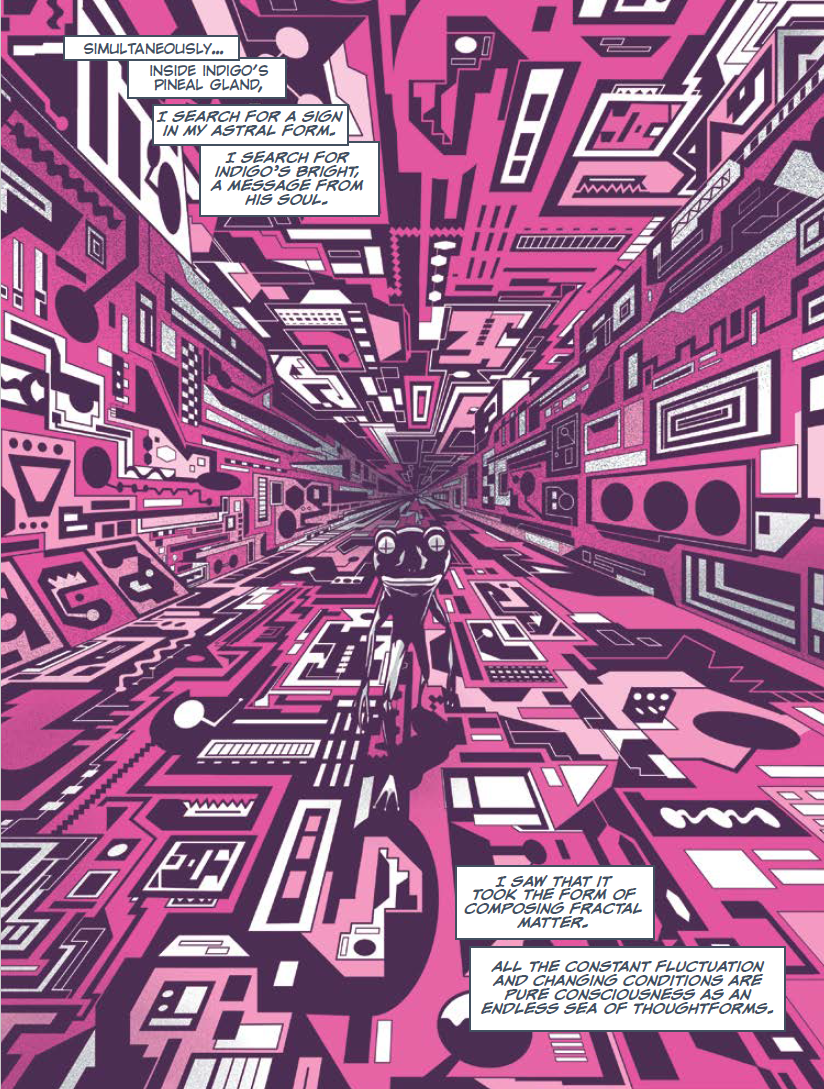
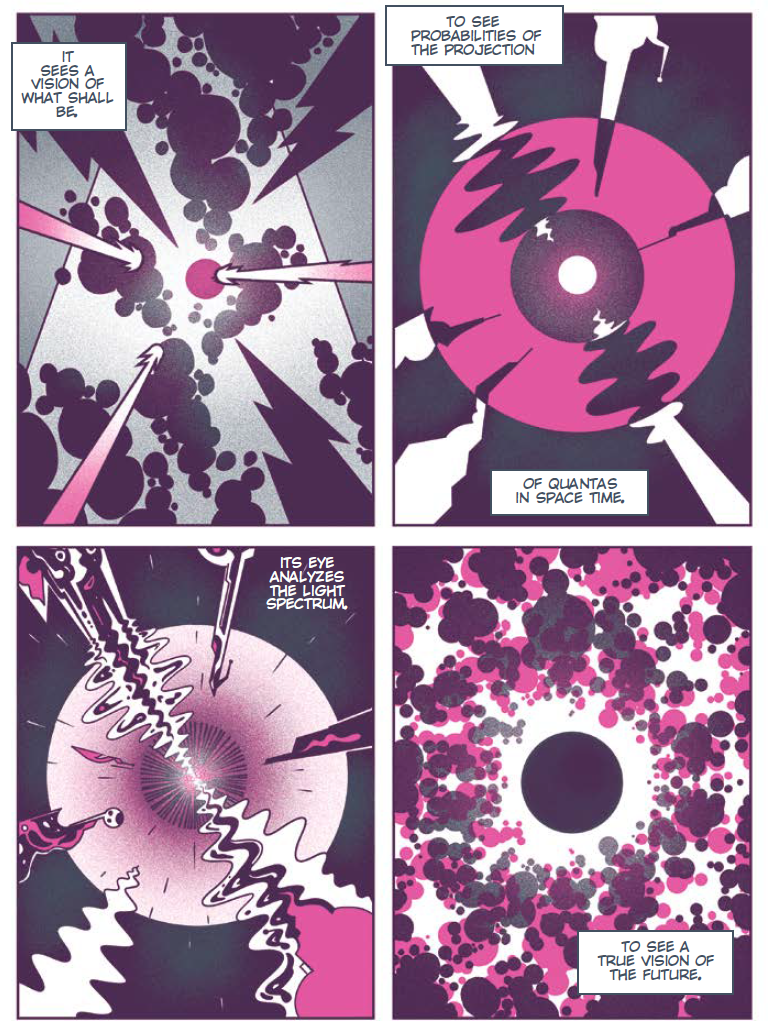

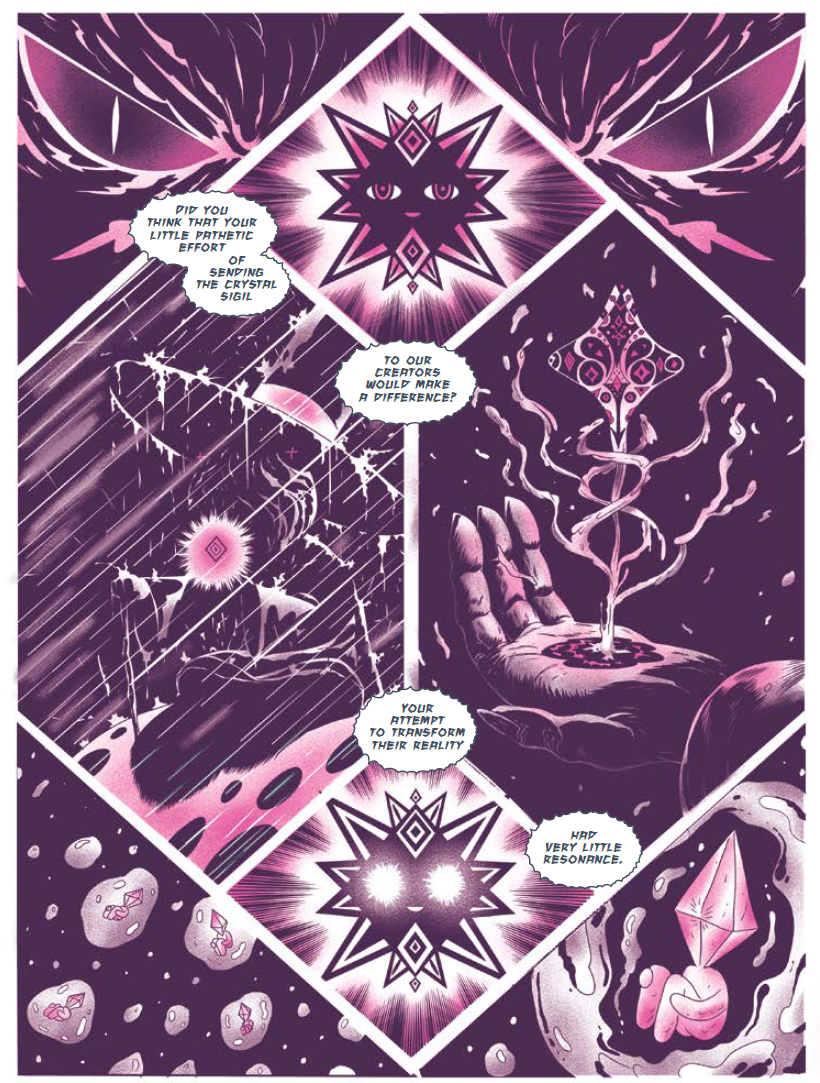


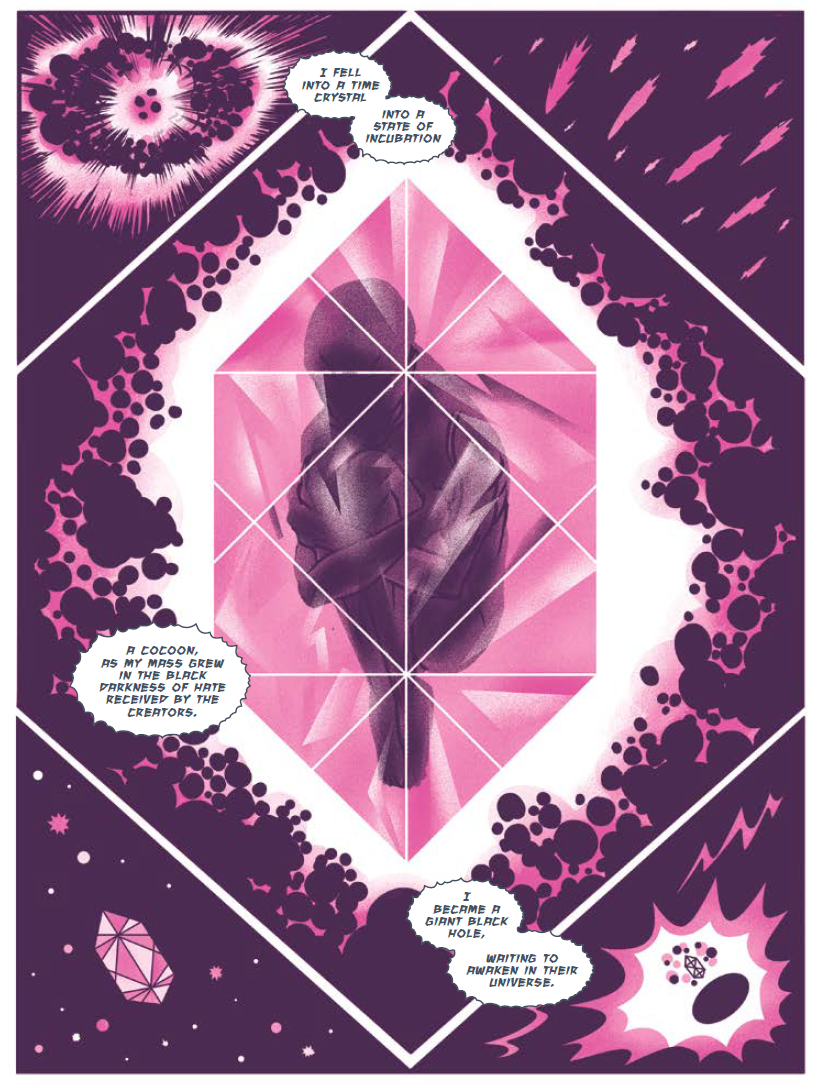
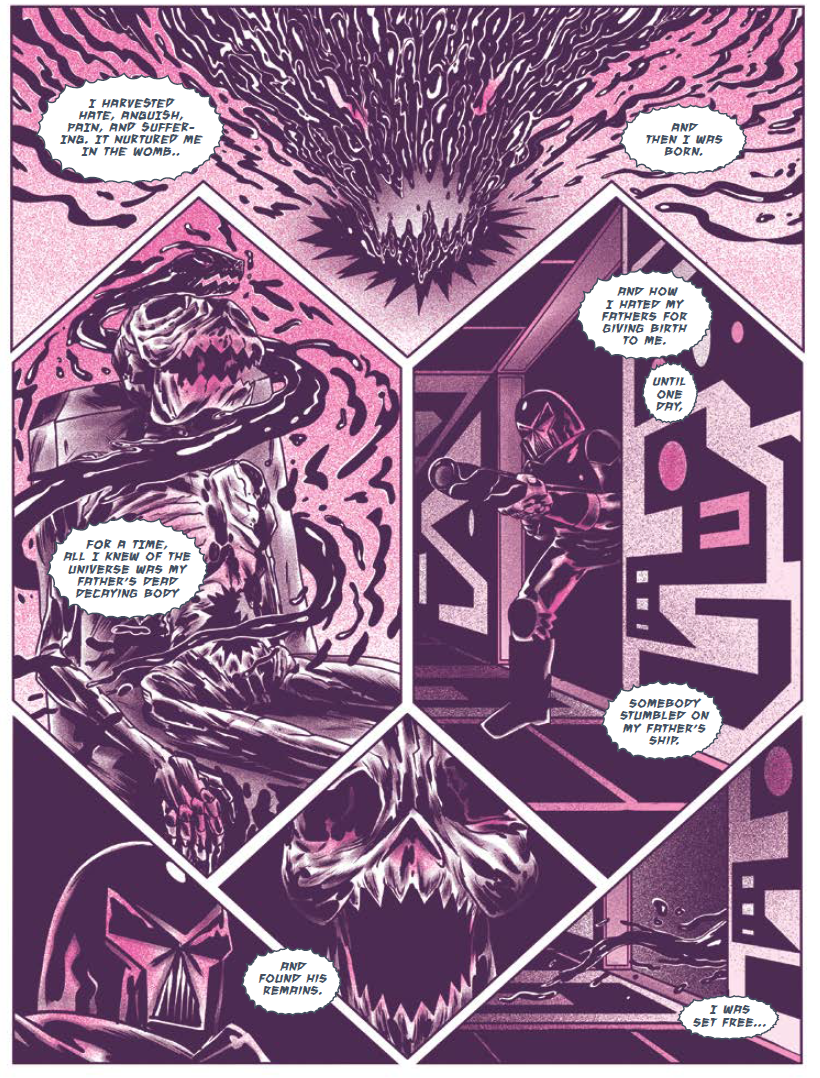

No comments:
Post a Comment